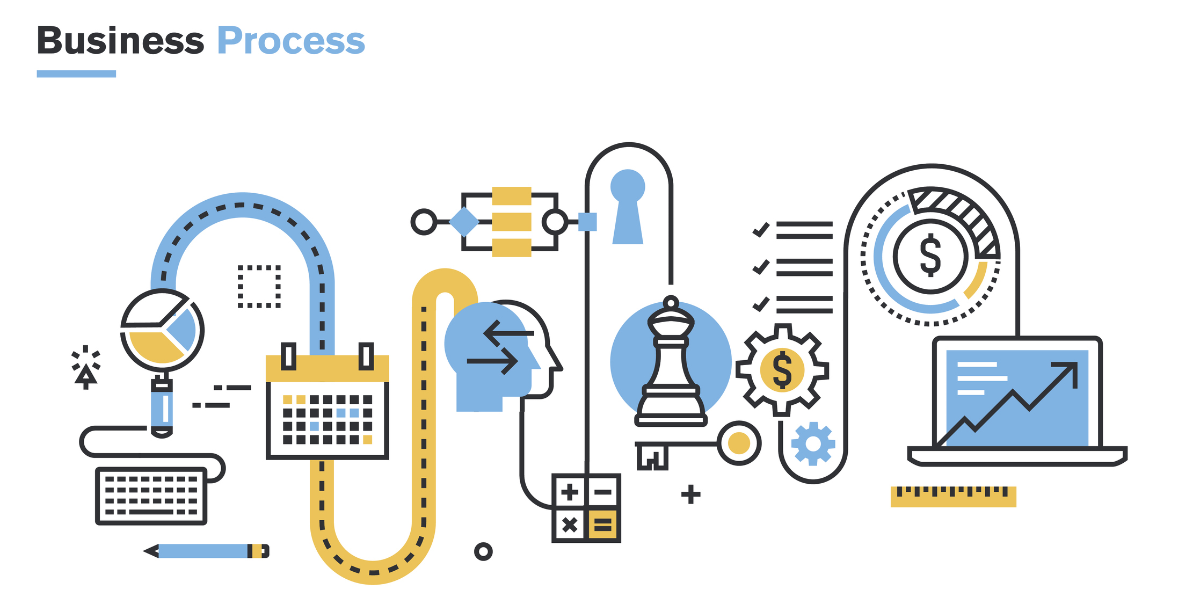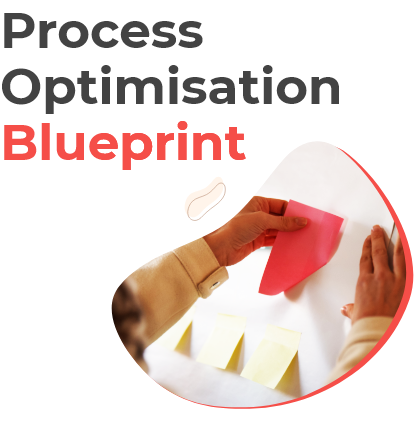Quick Read – Business Process Management (BPM) Acronyms

To help you understand the nuances of Business Process Management (BPM) better, here’s a list of acronyms predominantly used in the BPM context.
ABC – Activity-Based Costing
Activity-based costing (ABC) is a costing method that identifies activities in
an organisation and assigns the cost of each activity to all products and
services according to the actual consumption by each.
B2B – Business-to-Business
Business to business refers
to business that is conducted between companies, rather than between a company
and individual consumers.
BAM – Business Activity Monitoring
Business Activity Monitoring (BAM) is software that aids in monitoring of
business activities, key performance indicators, business / operational
exceptions and business risks, as those activities are implemented in computer
systems.
BOM – Bill-of-Material
A bill of materials or product structure (sometimes bill of material, BOM or
associated list) is a list of the raw materials, sub-assemblies, intermediate
assemblies, sub-components, parts, and the quantities of each needed to
manufacture a product.
BPA – Business Process Analysis
Business Process Analysis (BPA) is a methodology for the analysis of a business
with a view to understanding the processes and improving the efficiency and
effectiveness of its operations.
BPEL – Web Service Business Process Execution Language
The Web Services Business Process Execution Language (WS-BPEL), commonly known
as Business Process Execution Language (BPEL), is an OASIS standard executable
language for specifying actions within business processes with web services.
BPM – Business Process Management
Business process management (BPM) is a discipline in operations management in
which people use various methods to discover, model, analyse, measure, improve,
optimise, and automate business processes.
BPMN – Business Process Model & Notation
Business Process Model and Notation (BPMN) is a standard for business process
modeling that provides a graphical notation for specifying business processes
in a Business Process Diagram (BPD), based on a flowcharting technique very
similar to activity diagrams from Unified Modeling Language (UML).
BPMS – Business Process Management System
Business process management systems automate core business processes from
“end to end.” That means a good business process management system
has the tools and technologies to include human-focused tasks along with
machine processing applications to allow a company or organisation to flexibly
manage its work.
BPR – Business Process Re-engineering
Business Process Re-engineering is the process of restructuring a company’s
organisation and methods, especially so as to exploit the capabilities of
computers.
BTO – Build-to-Order
A Build to Order (BTO) product is custom-made for a specific customer according
to what the customer requests.
BVA – Business Value-Adding
A step or change made to the product which is necessary for future or
subsequent steps but is not noticed by the final customer.
CMMI – Chief Maturity Model Integrated
The Capability Maturity Model Integration (CMMI) is a process and behavioural
model that helps organisations streamline process improvement and encourage
productive, efficient behaviours that decrease risks in software, product and
service development.
CPO – Chief Process Officer
A chief process officer (CPO) is the senior-most executive reporting to the Board
of Directors, CEO, or COO with responsibility for an enterprise’s business
process transformation and continuous improvement initiative.
CRM – Customer Relationship Management
Customer Relationship Management (CRM) is a technology for managing all your
company’s relationships and interactions with customers and potential
customers.
CT – Cycle Time
The period required to complete one cycle of an operation; or to complete a
function, job, or task from start to finish.
DBMS – Database Management System
A Database Management System (DBMS) is a system software for creating and
managing databases.
DES – Discrete-Event Simulation
Discrete Event Simulation (DES) is the process of codifying the behaviour of a complex system as an ordered sequence of well-defined events. In this context, an event comprises a specific change in the system’s state at a specific point in time.
DMS – Document Management System
A Document Management System (DMS) is a system used to track, manage and store
documents and reduce paper.
ERP – Enterprise Resource Planning
Enterprise Resource Planning (ERP) is business process management software that
allows an organisation to use a system of integrated applications to manage the
business and automate many back-office functions related to technology,
services and human resources.
KPI – Key Performance Indicator
A key performance indicator is a measurable value that demonstrates how
effectively a company is achieving key business objectives.
PD – Product Development
Product development, also called new product management, is a series of steps
that includes the conceptualisation, design, development and marketing of newly
created or newly rebranded goods or services.
PDCA – Plan-Do-Check-Act
A Plan-Do-Check-Act, sometimes seen as Plan-Do-Check-Adjust (PDCA) is a
repetitive four-stage model for continuous improvement (CI) in business process
management.
PO – Purchase Order
A purchase order (PO) is a commercial document and first official offer issued
by a buyer to a seller indicating types, quantities, and agreed prices for
products or services.
RBAC – Role-Based Access Control
Role-Based Access Control (RBAC) is a method of restricting network access
based on the roles of individual users within an enterprise.
RFQ – Request For Quote
A Request For Quotation (RFQ) is a document that an organisation submits to one
or more potential suppliers eliciting quotations for a product or service.
ROI – Return-On-Investment
Return on Investment (ROI) measures the gain or loss generated on an investment
relative to the amount of money invested.
SCAMPI – Standard CMMI Appraisal Method for Process Improvement
The Standard CMMI Appraisal Method for Process Improvement (SCAMPI) is the
official Software Engineering Institute (SEI) method to provide
benchmark-quality ratings relative to Capability Maturity Model Integration
(CMMI) models.
SCOR – Supply Chain Operations Reference Model Smart
The Supply Chain Operations Reference Model (SCOR) is a management tool used to
address, improve, and communicate supply chain management decisions within a
company and with suppliers and customers of a company.
SOA – Service-Oriented Architecture
Service-oriented Architecture (SOA) is a style of software design where
services are provided to the other components by application components,
through a communication protocol over a network.
TCT – Theoretical Cycle Time
The TCT is the cycle time if we only counted value-adding activities and excluded any waiting time or handover time, so it counts only processing times.
TOC – Theory of Constraints
The Theory of Constraints (TOC) is a management paradigm that views any
manageable system as being limited in achieving more of its goals by a very
small number of constraints.
TQM – Total Quality Management
A core definition of Total Quality Management (TQM) describes a management
approach to long-term success through customer satisfaction. In a TQM effort,
all members of an organisation participate in improving processes, products,
services, and the culture in which they work.
UIMS – User Interface Management System
A User Interface Management System (UIMS) is a mechanism for cleanly separating
process or business logic from Graphical User Interface (GUI) code in a
computer program.
UML – Universal Modelling Language
UML, short for Unified Modeling Language, is a standardised modeling language
consisting of an integrated set of diagrams, developed to help system and
software developers for specifying, visualising, constructing, and documenting
the artifacts of software systems, as well as for business modeling and other
non-software systems.
WfMC – Workflow Management Coalition
Workflow Management Coalition (WfMC) is a consortium formed to define standards
for the interoperability of workflow management systems.
WfMS – Workflow Management System
A workflow management system (WfMS or WFMS) provides an infrastructure for the
set-up, performance and monitoring of a defined sequence of tasks, arranged as
a workflow application.
Are you tired of…Messy, manual processes that can't be scaled?
We work with operations leaders looking to digitally transform their manual back-office processes and procedures.
We combine your existing business processes with our software, plus decades of enterprise process re-engineering and change management experience to quickly scale and see the results you are looking for.





